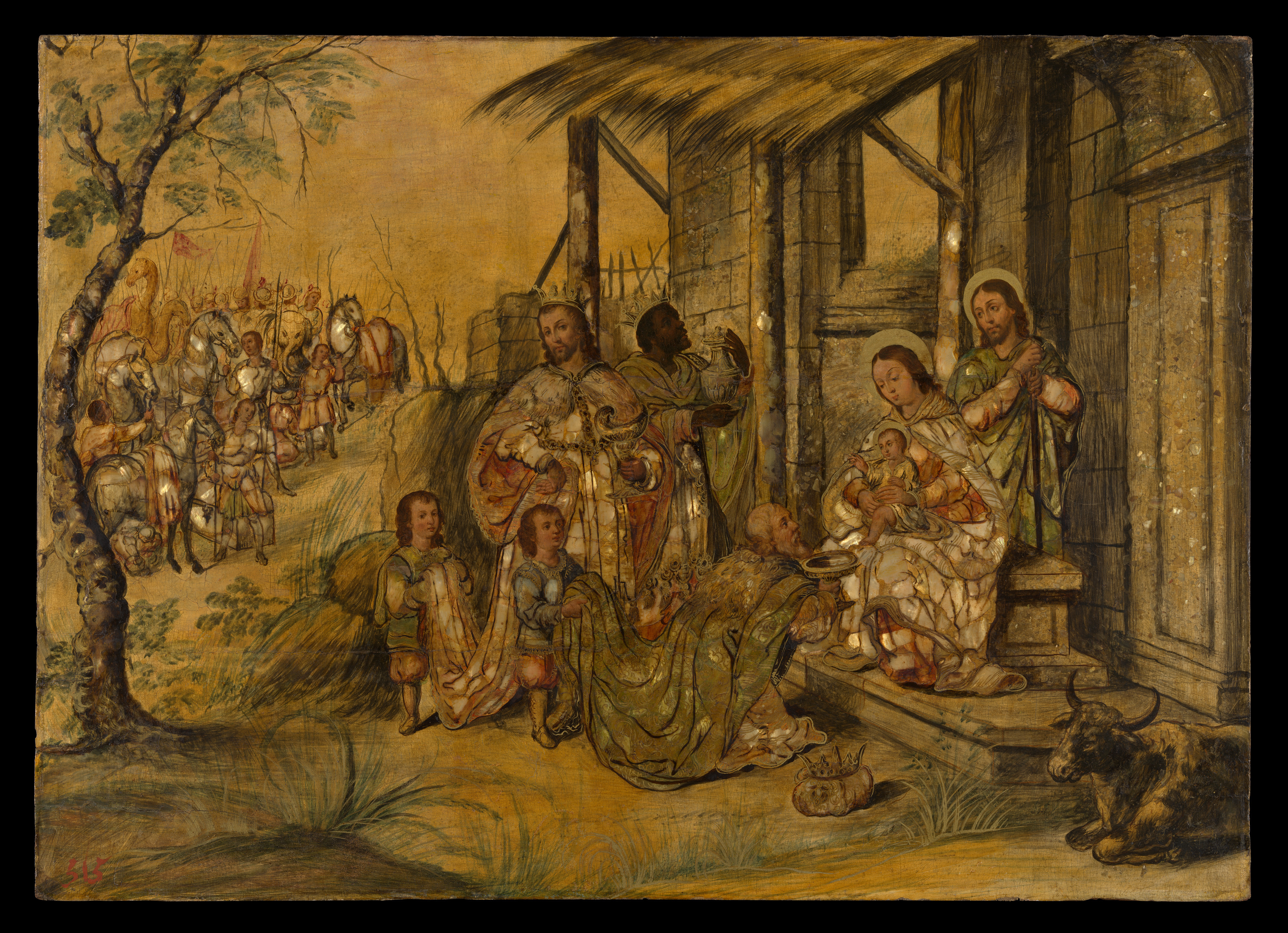The Adoration of the Magi
Attributed to Miguel Gonzalez Mexican
This unusual work is executed in a painted inlay technique known as enconchado, a term that derives from the Spanish word for shell (concha). Although it is indebted to imported Asian artworks inlaid with mother of pearl, the technique was ingeniously adapted by artists in Mexico City to local pictorial practices and objectives.
The Adoration of the Magi originally formed part of a series of twelve panels dedicated to the life of the Virgin Mary. Outside a rustic stable, Mary receives three gift-bearing kings who pay homage to the holy child. The artist has used mother of pearl inlays to convey the resplendence of their garments, the gleam of precious metal, and the iridescence of feathers. The inlays are painted, colored with glazes and varnishes, and enriched by the delineation of details in shell gold. Crushed shells fragments are used to imitate the texture of stone masonry. The optical properties of the material, with its shimmering luminosity, are well-suited to the representation of a subject that is fundamentally concerned with the incarnation and revelation of the divine. Unique to New Spain, enconchados are emblematic of the Spanish viceroyalty’s status as a nexus of global commerce and exchange. The material alone references transoceanic trajectories of empire and trade. The influence of Nanban lacquerware, made in Japan for the Iberian market, can be seen in the eye-catching ornamentation the frame. At the same time, although it is less obvious, a debt to pre-Hispanic shellwork traditions can also be detected.
Due to rights restrictions, this image cannot be enlarged, viewed at full screen, or downloaded.
This artwork is meant to be viewed from right to left. Scroll left to view more.




